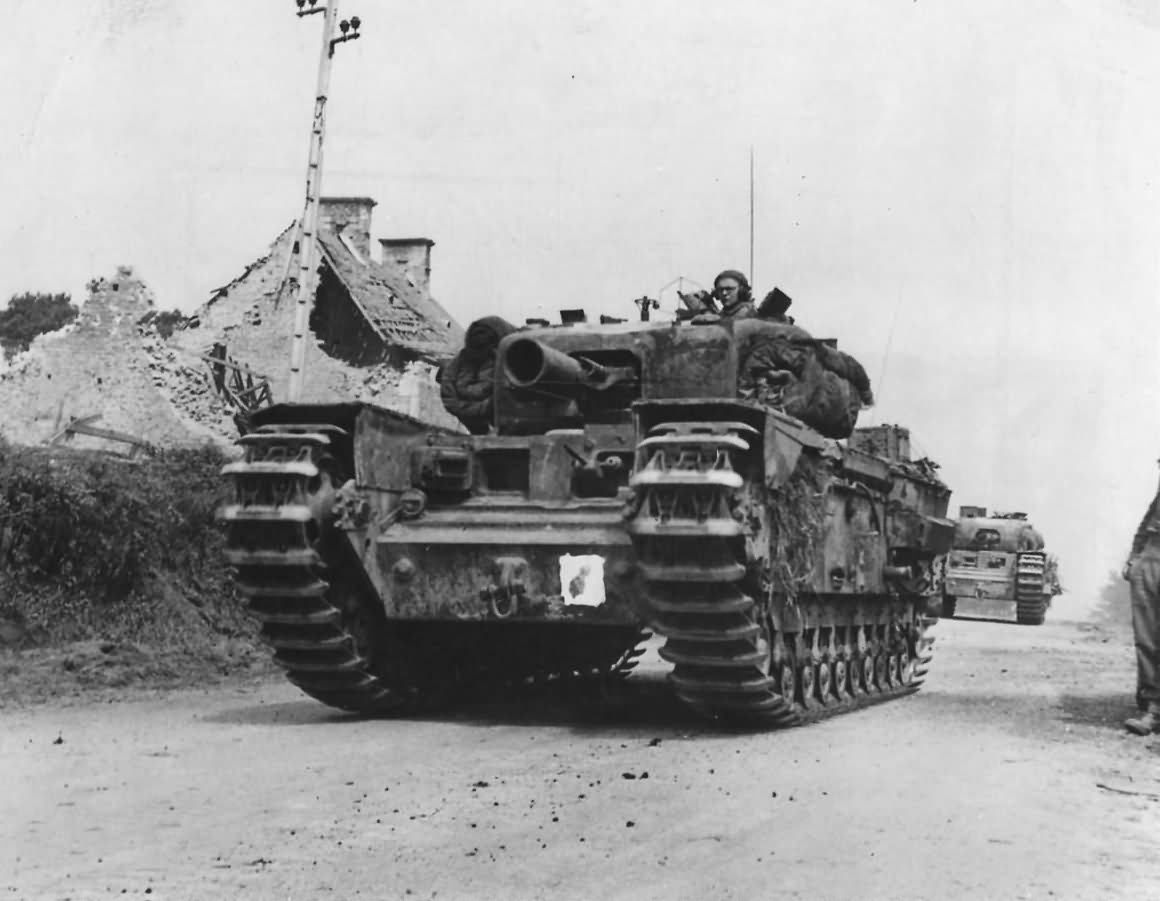The Churchill AVRE (Armoured Vehicle Royal Engineers) was a specialized armored vehicle developed by the British during World War II, designed to support amphibious assaults by clearing obstacles and demolishing fortifications. This vehicle played a critical role during Operation Overlord (the D-Day landings), providing vital support to infantry units as they stormed the heavily fortified beaches of Normandy.
Development and Design
Origins:
- The concept for the Churchill AVRE emerged after the failed Dieppe Raid in 1942, which highlighted the need for specialized engineer vehicles to deal with beach obstacles and fortifications.
- Two Canadian officers, Lt. John J. Denovan and Capt. Schortinghuis, played pivotal roles in the initial development. They worked under the Department of Tank Development (DTD) and conceived the idea of an engineer tank that could deploy demolition teams effectively in amphibious operations.
Choice of the Churchill Tank:
- The Churchill tank was selected as the base for the AVRE due to its sturdy design, side doors for easier crew access, and spacious interior, which was ideal for carrying engineer teams and equipment. Alternatives like the Sherman or Ram tanks were considered less suitable for this specific role.
The Petard Mortar:
- A critical feature of the Churchill AVRE was the Petard mortar, a 290mm spigot mortar adapted from the Blacker Bombard. The Petard was designed to fire a 40-pound projectile, known as the “Flying Dustbin,” which contained a 23-pound high-explosive charge. With a range of approximately 80 yards, it was intended to demolish enemy fortifications, such as walls, bunkers, and other obstacles, clearing the way for infantry and other armored units.
Prototypes and Production:
- The first unarmed prototype of the Churchill AVRE was completed in early 1943. After refinement, a second prototype was approved by the War Office in February 1943. Following successful trials, a large-scale conversion program was launched in May 1943, with an initial requirement for 475 Churchill AVREs.
- By D-Day, approximately 180 Churchill AVREs had been completed, with 121 delivered to units preparing for the Normandy landings.
Role in Operation Overlord
Deployment on D-Day:
- About 115 Churchill AVREs were assigned to the initial assault waves on D-Day, tasked with supporting infantry by clearing obstacles and demolishing fortifications on the heavily defended beaches.
- The majority of these vehicles were equipped with various accessories tailored for obstacle clearance, such as fascines (large bundles of wood used to fill ditches), Small Box Girder bridges (portable bridges), and other specialized engineer tools. These attachments were essential for overcoming the numerous obstacles placed by the Germans to hinder the Allied advance.
AVRE Variants:
- AVRE Command: Four of the Churchill AVREs were designated as command vehicles. These had additional radio equipment to coordinate operations and maintain communication with other units during the assault.
- AVRE-GP (General Purpose): Eight AVREs were classified as general-purpose vehicles, meaning they were not equipped with any specialized obstacle-clearing devices. Instead, they served as flexible support vehicles, ready to assist where needed.
